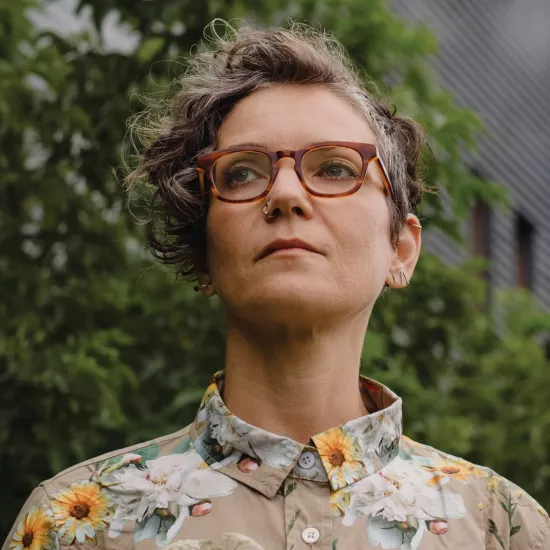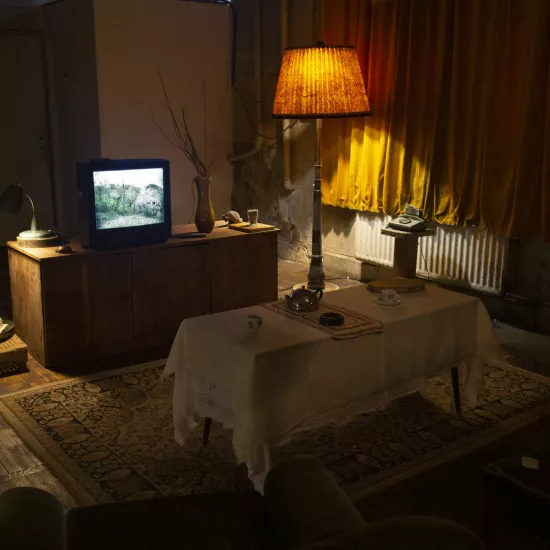UTM professor: From 'high life' to higher learning

Going from crack dealer to professor isn’t a typical career trajectory for most academics, but the rough streets of the South Bronx is exactly where ethnographer Randol Contreras got his start. Now an assistant sociology professor at U of T Mississauga, Contreras has spent his career chronicling the lives of people living in America’s toughest neighbourhoods, beginning on his own patch of urban sidewalk.
Contreras, the child of Dominican immigrant parents, grew in New York’s South Bronx neighbourhood during the ’80s and ’90s. At that time, the area was hollowed by crack cocaine, social service cuts and neglect. Like many of his peers, Contreras dabbled in the drug trade, but by his own admission, he wasn’t cut out for the work. “I was a miserable crack dealer,” he remembers. Local drug dealers deemed his product “garbage” and high overhead costs and a changing economy soon ended his short-lived venture.
Contreras was about to find a new calling. A friend convinced him to enroll in a community college four hours away where he was first exposed to ideas that helped him see his world in a new way. “I started seeing larger issues that explained why certain people did certain things,” he says. “What were the social forces outside of these individuals that were shaping them, and causing them to commit crimes? These questions drove me to understand my own neighbourhood.”
As Contreras worked towards a PhD, he kept in touch with his neighbourhood friends who were in the middle of their own career shifts. By the early 2000s, the drug trade was dwindling and the crack cocaine market had dried up. Many of Contreras’ pals turned to a new kind of business—robbing other drug dealers, using brutal violence and even torture to get what they wanted. “Before, [dealing drugs] was about being a good manager and a good organizer—if there was any violence involved, it was about defending territory,” says Contreras. “Now, violence was the main skill and the main motive of their work. To do their work right, they had to change.”
Contreras saw an opportunity to use his academic experience to understand and explain what was happening in the South Bronx. It became the focus of his work for the next 10 years.
Contreras says that much of the contemporary research focused on the idea of “street culture” to explain why people committed robberies. “The literature focused on the notion of life as a party, with heavy sex, heavy drinking and heavy gambling.” Robbery was lumped in with those activities, he says, with the assumption that those behaviours were committed to achieve a similar emotional high.
“There are other reasons people become drug robbers,” he says. “The contemporary researchers were writing about street culture as if there were no way out. I say there are other things that pull you in or push you out.”
“You have to look at historical details, events, politics and community conditions to make sense of people.” Researchers, he says, were missing the larger structural factors at work in the South Bronx—specifically the rise and fall of the drug market.

Contreras acknowledges that his insider approach to research isn’t always supported by his academic peers. “They see people as subjects,” he says. “But I don’t know if you can do that with ethnography.” Contreras argues that his personal connection to his South Bronx subjects permitted him special access to information he wouldn’t have gotten otherwise. “For my work, I have to develop relationships. That’s when people are more forthcoming—they’ll share more details of their lives,” he says.
He maintains his personal connections don’t interfere with his analysis. “When I get home to write up the field notes or transcribe the interviews, I do stand back and ask myself, ‘What’s going on here?’” he says. “I always have three basic questions to answer: How did these individuals come to be who they are? How do they do what they do? What are the consequences for who they are and what they do?”
Contreras argues that his theoretical education helps him see his subjects through new eyes. “I come to the research field with theories, like feminist theory, concepts of masculinity or Marxist theory,” he says. “There are things I see now that I wouldn’t have seen before. It’s all fresh to me.”
While writing Stickup Kids, Contreras was careful to keep his analysis clear and free of academic jargon, taking his writing inspiration from journalist William Adler and Black Boy author Richard Wright. “I want to do and write sociology so the people who come from the communities that I study can understand it,” he says. “I want people to understand what’s going on in their lives, so they see spaces for intervention where they could potentially do something about it.”
Contreras, who joined UTM in September 2014, has moved on to a new research project studying the tough Mexican Maravilla gangs of east Los Angeles. The Maravilla gangs are infamous for defying the powerful Mexican Mafia to remain independent of the criminal association.
Where he was an insider for his South Bronx research, Contreras is an outsider in Los Angeles. Two years into the project, he is still establishing the connections he needs to do his work. “It’s taken a year-and-a-half to get them to trust me because they don’t know me,” he says. “I’m just this person who is doing research. I have no neighbourhood history. I have no family or friends who can vouch for me. They’ve never been to my home. It has taken a long time to develop rapport.”
He visits Los Angeles whenever there’s a break in the academic calendar, blending into the Maravilla community by shaving his head, wearing crisply ironed khaki pants and white undershirts, and blasting “oldies” like Gene Chandler’s “Duke of Earl” from his car stereo. He teaches handball—a favourite past-time for gang members—at a local community centre, and volunteers at community events.
Contreras will eventually write a book about the Maravilla community. “If it comes out too soon, it’s not going to be complete,” he says. “I’m going to need another few years to get it right and feel they are giving me information I can trust.”
He acknowledges that his work brings him into contact with people involved in violent crime, but says that telling the stories of the communities he studies outweighs any potential dangers. He says his greatest thrill is hearing that his work helps people understand the communities they come from. “I have students who read my work at the community college level who write to me saying, ‘Now I understand why my neighbourhood is the way it is,’ or ‘Now I understand why my brother turned out the way he did,’” he says. “It resonates with their life experiences.”



